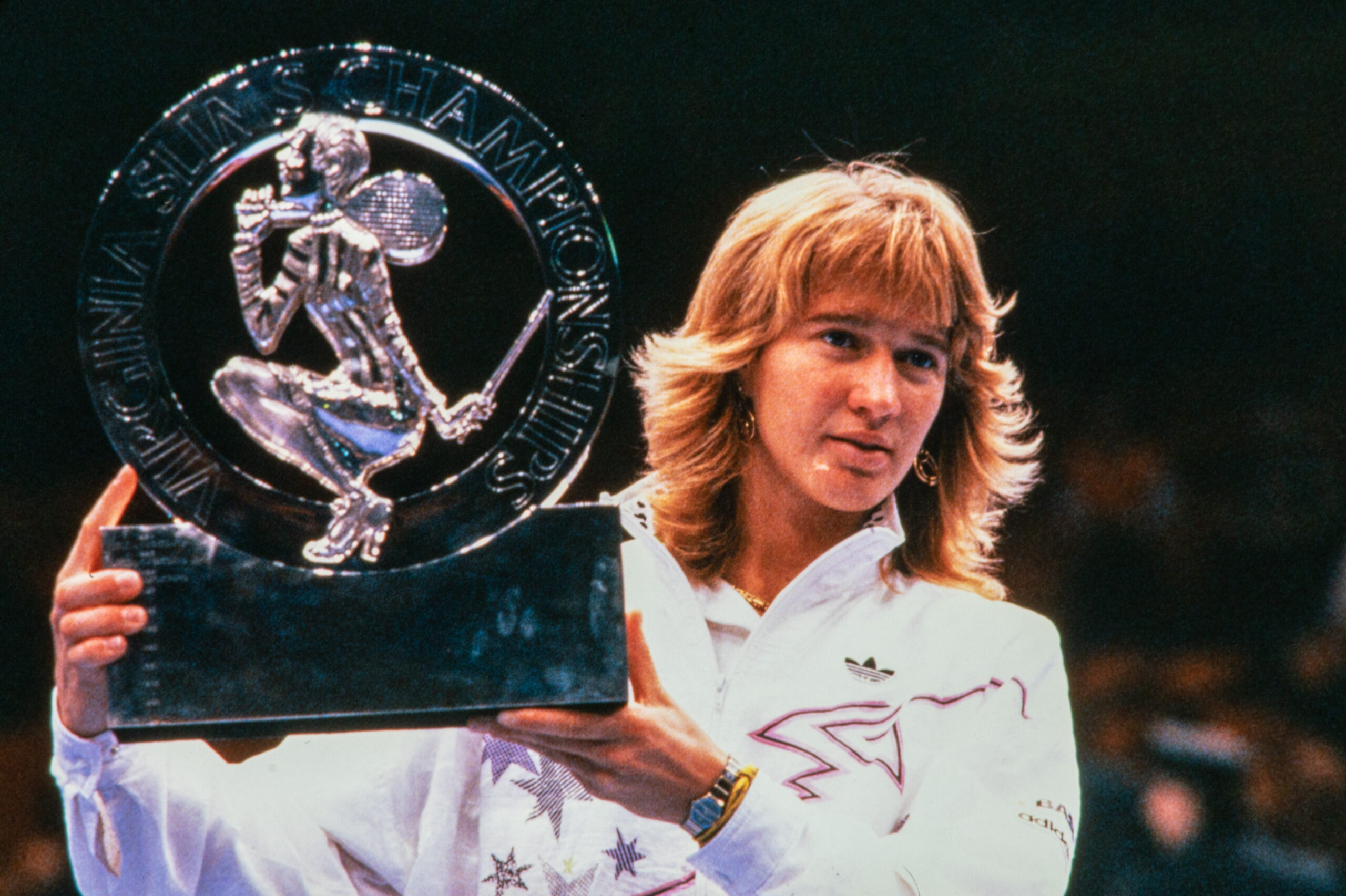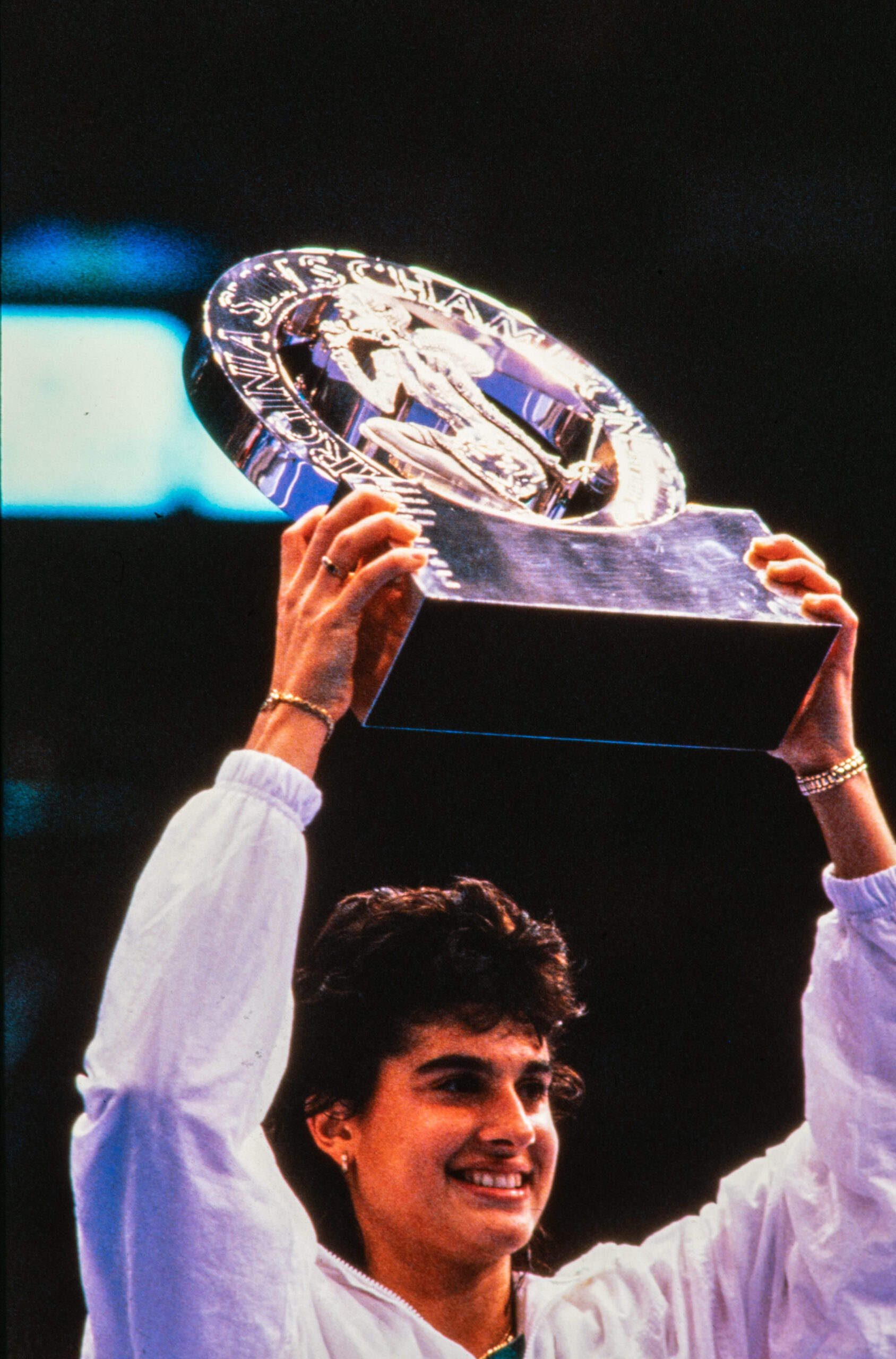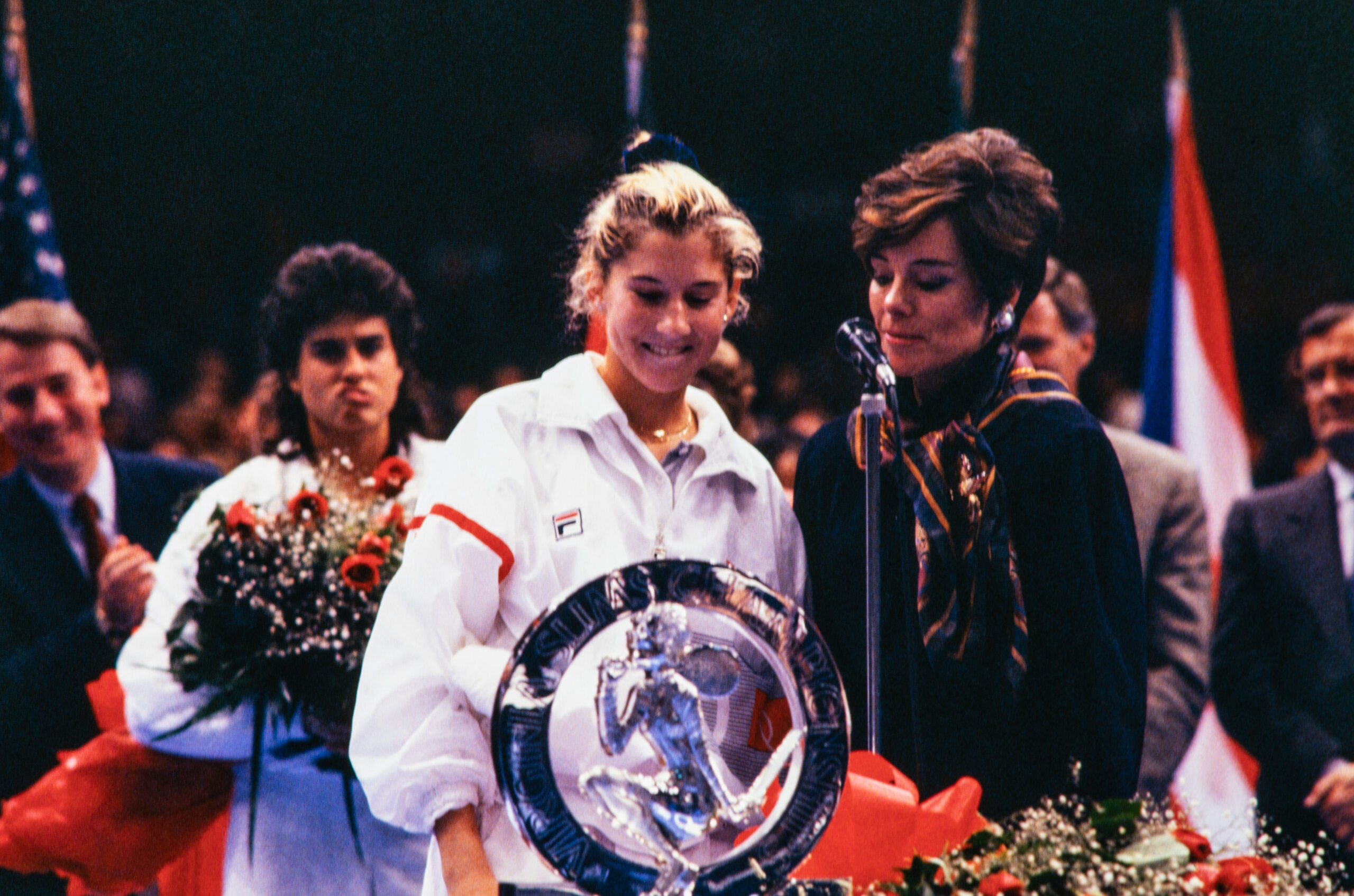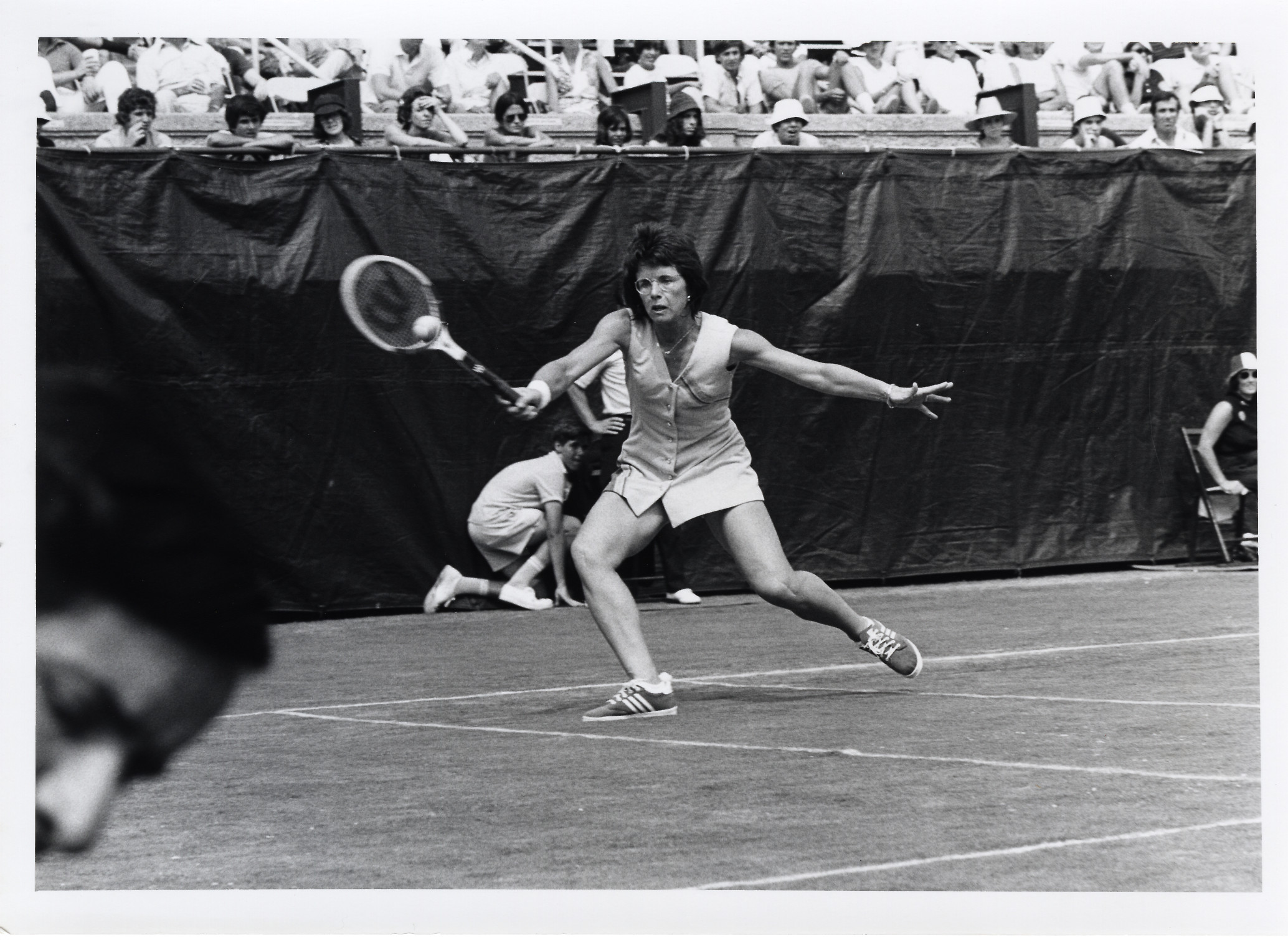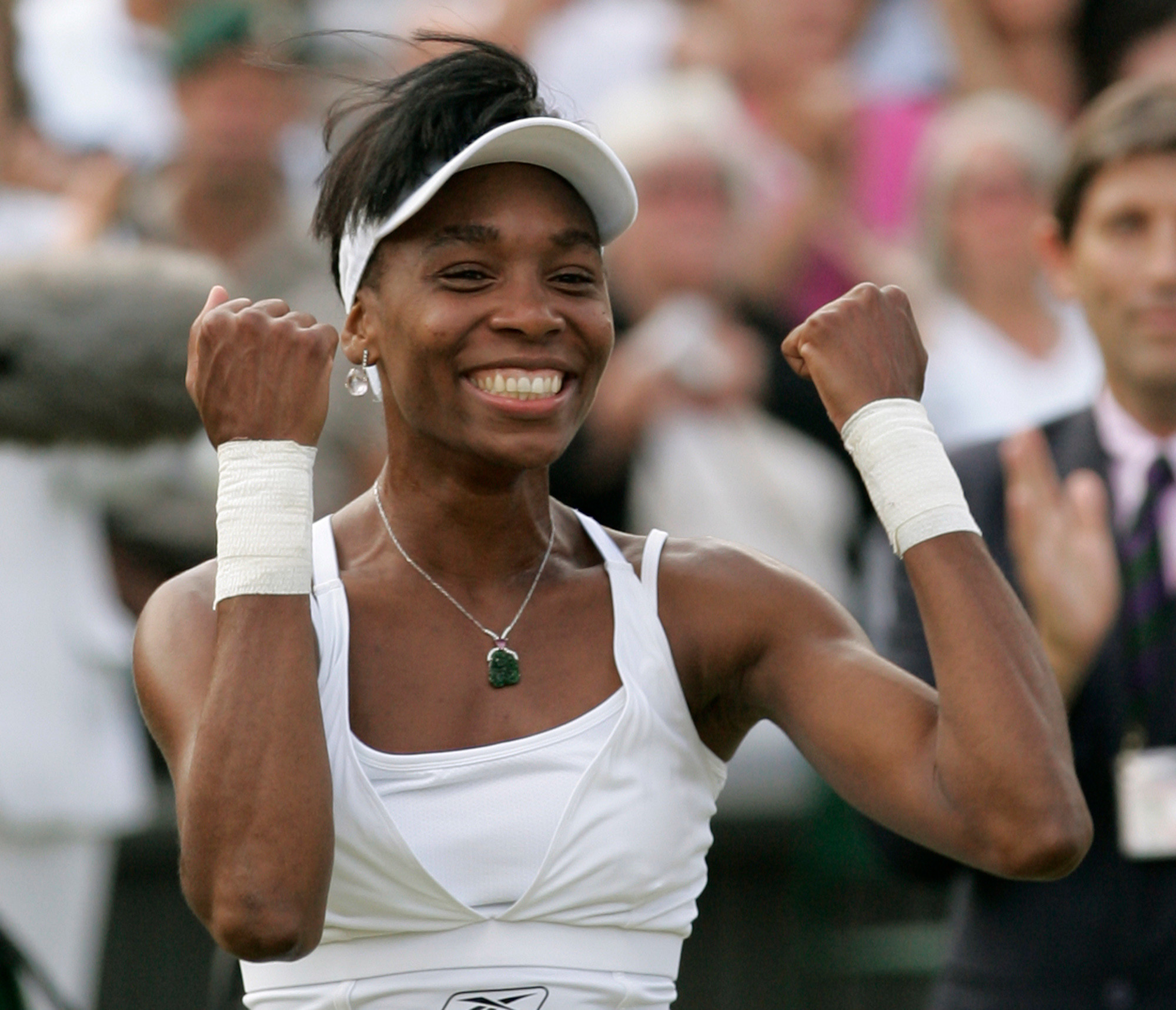The Fight for Equal Pay
“That day we voted to make our sport better,” King says of the 1973 meeting at the Gloucester Hotel. “We made history—a special history that lives on today with the WTA Tour. The stars were aligned. For the first time in my life, women’s tennis felt unified.”
The Original 9 are hallowed in the halls of tennis history, and for good reason, as their impact on women’s tennis was instrumental. However, without their promotion from Gladys Heldman, their efforts may have looked quite different. When Heldman signed the Original 9 to $1 contracts in 1970, she had secured a sponsorship from Virginia Slims to sponsor the inaugural Houston Invitational Tournament. Virginia Slims would go on to be a key title sponsor as the women’s tour grew from a few small tournaments to a full calendar of events over the next two decades, evolving into the current WTA Tour. Virginia Slims maintained a title sponsorship over the season-end championship title until 1994. From 1984-1994, four players won the championships: Martina Navratilova, Gabriela Sabatini, Monica Seles, and Steffi Graf.
The Invitational was such a success that the title sponsor backed almost two dozen events across the U.S. in 1971. The Original 9 and their colleagues worked tirelessly to cultivate relationships with promoters and sponsors and to market their league to the media and the public, all while recruiting more players to the cause. This built momentum that would eventually lead to the formation of the WTA in 1973 and inspire the fight for equal prize money for decades to come, with Billie Jean King as the founder.
Although this advocacy did not directly address the majors, the pressure put on tennis by the Original 9, specifically Billie Jean King, and the culturally relevant women’s movement, had a cascading effect on prompting the majors to consider equal pay. The US Open was the first tournament to reach this milestone, offering equal pay to the male and female competitors in 1973, just three years after the Original 9 signed their contracts. It would be years before the other majors took this step, with Australia offering equal prize money for a stint from 1984-1996 before reverting to paying men more. In 2001, the tournament again offered equal pay and became the second major to do so. The final two majors, Roland Garros and Wimbledon, only offered equal prize money in the mid-aughts, when the next generation of players took on an advocacy role.
In 2005, Venus Williams joined a Grand Slam Committee meeting, in part to advocate for equal pay. She is credited with persuading Roland Garros’s president, who offered equal prize money for the winners in 2006, and for the entire draw in 2007. Wimbledon followed suit that same year, becoming the final major to offer equal pay in 2007, largely in part due to Venus Williams’ advocacy. This historic moment is memorialized by a trophy, which features a tennis ball from 2007 Wimbledon, perched on the wooden base underneath the crystal structure of the trophy. The ball is signed by the 2007 Wimbledon finalist, Marion Bartoli, and the victor, none other than Venus Williams herself.
The legacy of these advocates, including Billie Jean King and Venus Williams, is evident in the current landscape of the sport. According to Forbes, in 2023, 9 of the 10 highest paid female athletes were tennis players, however, a significant amount of earnings is coming from partnerships and sponsorships. Despite these great strides, and the work of many people who have advocated for equal pay, there is still significant inequality in pay between the men’s and women’s tour, outside of the majors. Efforts are being made by both men’s and women’s players, as well as the tours themselves to close this gap, forecasted by the WTA to be achieved by 2033.
Photo courtesy of AP Photo/Stephen Chernin
